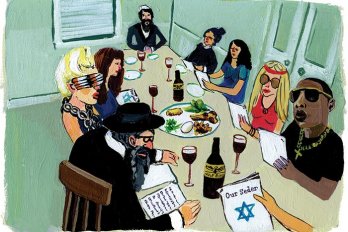In the early 1980s, I was the publisher of Saturday Night, a magazine much like The Walrus. Founded in 1887 as a weekly newspaper, it thrived between the two world wars under the editorship of B.K. Sandwell, but by the time I came along it had morphed into a monthly magazine, and had lost money for as long as anyone could remember. Its editor at the time—and, except for Sandwell, its most distinguished—was Robert Fulford, now a columnist at the National Post. I was hired by Norman Webster, who owned the magazine with his brother and sister, and who would become editor-in-chief of the Globe and Mail and, later, the Montreal Gazette. My job was to make the magazine profitable—or, at least, to stem its losses. What none of us understood—not Bob, not Norman, and certainly not I—was that this was probably impossible.
In a country with a population as small as Canada’s, a magazine whose mission is more to enlighten than to entertain cannot attract enough readers to survive on the two traditional revenue streams: circulation and advertising. Even in the United States, such magazines struggle. At Saturday Night, we used to brag that our penetration of the Canadian market exceeded that of Harper’s, The Atlantic, and The New Yorker combined in the US—but it still wasn’t enough. I felt proud of Saturday Night, but I was helpless to turn it around. The Websters eventually sold the magazine to Conrad Black, then at the top of his game as a media baron, but even he failed to make a go of it. For a time, it was published in the National Post as a weekly supplement, an estimable magazine but prohibitively expensive. A final attempt to revive it as a monthly also foundered, and it expired—this time for
good—in 2005.
Observing all this from afar, the founders of The Walrus sensibly realized they would need a different business model. The one they borrowed was from Harper’s, which is published by a foundation and has been the beneficiary of millions of philanthropic dollars from the MacArthur family. (Canadian Art magazine also adopted this model.) Thus the Walrus Foundation, described in the fine print on the magazine’s masthead as “a registered charity with a mandate to advance education by promoting writing, literacy, art, and debate on matters vital to Canadians.” The fine print goes on to say that while The Walrus constitutes the foundation’s primary activity, it is not the only one. Among other endeavours, the foundation organizes public debates, such as the Walrus McGill Debate on city building (Simon Brault vs. Witold Rybczynski), held at the Segal Centre in March; and the Walrus National Gallery Debate on the Group of Seven (Ross King vs. Tom Smart), which takes place at the National Gallery this May.
The foundation provides The Walrus with a third revenue stream: tax-deductible donations from people who believe we need a magazine about Canada and its place in the world. As wonderful as they are, Harper’s, The Atlantic, and The New Yorker are produced by mostly American editors, for mostly American readers. They rarely cast their gaze north of the forty-ninth parallel. It wouldn’t occur to them, for instance, to publish Grant Stoddard’s rant on the oath to the Queen required of new Canadian citizens, or Lisa Moore’s delightfully idiosyncratic portrait of Newfoundland after the departure of Premier Danny Williams, both in this issue. This is writing that only a magazine produced by mostly Canadian editors, for mostly Canadian readers, would commission—because for us (unlike people in, say, Peoria, Illinois, or Marathon, Texas), it has relevance.
In the beginning, The Walrus had one patron: the Chawkers Foundation, which remains our largest donor. Today, however, we have hundreds more, including many of you. In 2010, our supporters gave us more than $1.6 million, just enough to cover the difference between what it cost to produce the magazine (roughly $3.3 million) and our circulation and advertising revenues ($975,000 and $650,000, respectively). Is such a magazine sustainable? Our contract with the foundation’s patrons is not so different from our contract with the magazine’s readers; both oblige us to deliver the goods. So yes, as long as we can continue to convince patrons and readers alike that its existence is vital, The Walrus will survive. Shelley Ambrose, our co-publisher and executive director of the Walrus Foundation, calls it an “optimistic national project,” which it is. But for me, it is also personal, because in The Walrus the spirit of Saturday Night lives on.
This appeared in the May 2011 issue.





